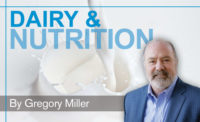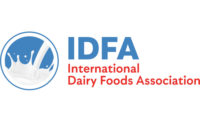In late February, the U.S. Food and Drug Administration put out for comment its suggestions to redo the Nutrition Facts label on food packages. One of the proposals is to call out the amount of added sugars in a food. When compared to orange juice, soft drinks and sports drinks, white milk comes out a winner, because it contains no added sugars. Plain yogurt would look pretty good, too. Both products also have potassium, vitamin D and other essential nutrients.
The FDA also wants food makers to declare the potassium and vitamin D content, because some consumers aren’t getting enough of these nutrients. So there is another win for milk. The FDA wants to update serving sizes. If you produce ice cream, know that the FDA proposes that pints state the calorie and nutrition information for the entire package as well as for a serving.
The comment period ends June 2. If you have an opinion, share it with the FDA.
Snacks and meals
Is yogurt a meal or a snack? The conventional answer is that, when eaten for breakfast, yogurt is a meal. But eaten mid-afternoon (after lunch but before dinner), yogurt is a snack.
Throw out what you used to know. It’s not just the rules that have changed; it’s the game itself. The truth is, the definitions of meals and snacks have changed, along with the eating habits of consumers. The questions dairy (or any food) processors have to be able to answer are: What is the eating occasion? and What is the consumer trying to accomplish during this occasion? Let your answers guide you in product development and marketing.
These were some of the points brought up during the IFT Wellness 2014 conference in Chicago in March. Snacking has increased “significantly” in the past 30 years, and the definitions of snacks and meals have blurred, said Barbara Katz of Health Focus International.
Go back to yogurt for a moment. A consumer might eat yogurt for breakfast because she wants protein. She might eat it in the afternoon to quell hunger pangs. Same food, different goals.
Katz and LuAnn Williams of Innova Market Insights spoke with consumers about their snacking habits and purchasing decisions. Foods sold in portion-controlled packages were popular with the seven panelists. Also in favor: convenience. One man chooses foods that are ready-to-eat. A woman likes microwavable foods.
As I listened to these consumers talk about why and how they make their food choices, I realized just how irrational they are. (But so am I, if you want to know the truth.)
To one consumer, lots of ingredients on a label mean a food is heavily processed. To another, it’s a sign of a healthier alternative (more ingredients = more nutrition). Flavored water is popular because it contains zero calories, zero sugar and no fat. (Tap water has the same make-up, but no one is drinking that.) In another session about developing new products, Dave Lundahl of Insights Now made the observation: “If you are going to play the game, it needs to taste good.”
STEMMING the tide
Earlier that week, I attended a presentation by PMMI, the packaging association that stages PackExpo and other related trade shows. The group is concerned about the lack of talent entering the packaging field, so it is promoting the STEM agenda in schools. The Science, Technology, Engineering and Math agenda is intended to interest young students in science, and to show them what they can accomplish when they understand and apply math and engineering to a problem.
Science is at the core of the dairy industry. You need knowledge of chemistry to understand how ingredients work together in formulating yogurts, cheeses, beverages and other dairy foods. An understanding of physics and engineering is vital to running a processing plant efficiently. I suggest you connect with PMMI and work together on events (like science fairs) to show the opportunities available in dairy processing to those with a STEM education.
One of the biggest opportunities in fluid dairy is in processing aseptic beverages. Here are some statistics that just wowed me. In 2010, China imported 8,668 tons of UHT milk. Just 34 tons (0.39% of the total) came from the United States, according to the U.S. Dairy Export Council. Two years later, China imported 79,733 tons, and U.S. processors had increased their exports to 2,695 tons (3.3%).
The Natrel division of Agropur USA certainly knows the potential in the market for aseptic beverages. The subsidiary of Canada’s Agropur Cooperative is adding a third filler to its plant in St. Paul, Minn., to accommodate demand and to be in position to take on more contract manufacturing business. I toured the Agropur plant this winter and saw first-hand how the company is addressing the need. See my reports beginning on pages 54 and 60.
If your dairy is going to last, you need to develop foods and beverages that meet the needs of consumers today. And you have to invest in modern processing and packaging equipment. Drop me a line about how your company has positioned itself to succeed in the future.



